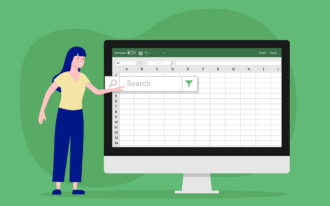Whether you’re a statistician, marketer, or business owner, demographics help you segment people into groups so that you can learn more about them and their habits. Demographics include a number of identifying factors and characteristics — age, race, sex, employment, education, income, birth rates, and more.
The importance of demographic-based data filtering
Companies often use data filtering (or segmenting) based on demographics when they want to understand their customers’ likes and dislikes for the purpose of marketing products and services. Since many companies target a specific customer persona (which comprises a specific set of demographics), filtering data is essential.
“Using demographic data as filtering criteria is crucial for customer or respondent segmentation,” says Michael Sena, company director at SENACEA, which offers spreadsheet consulting and training.
“When developing client personas or classifying interviewees, it’s essential that you select and filter for the most appropriate demographic characteristics. This helps you create relatively homogeneous groups in terms of behaviors you want to investigate.”
Mary Brown, marketing director at comparison site Merchant Maverick, cautions that if you don’t filter data based on demographics, you may end up with a subset of people who aren’t part of your target audience. “This skews your data, which can lead your team to make misinformed business decisions,” she explains.
5 examples of demographic-based data filtering
1. Ad targeting
“If you formulate the right segmentation strategy, you’ll be able to tap into ideal customer groups — the ones most worth your spend,” says Sena.
For example, assume you’re a local fast-food restaurant that just created a new, unique burger. You might target college students at surrounding universities with an ad that showcases the burger, specifically pointing out its taste and affordability.
However, if you’re a retailer of luxury watches, college students likely wouldn’t fit the bill. Assume you were to target your ads at all age groups. Data filtering across a combination of characteristics would likely indicate that high-income or high net-worth individuals in their 50s (particularly men) are most interested in your products.
2. Communication methods
“From my experience, demographic-based data filtering has shown that age is a great predictor for preferred communication means,” says Sena.
For instance, social media and instant messaging are usually best for interacting with millennials, but email works well for communicating with members of Generation X. And phone calls go over well when it comes to reaching Baby Boomers.
Marketers can discover and confirm similar insights through their own data filtering process. “They can also use additional demographic filters and brainstorming to determine an appropriate tone and length for their communications,” Sena explains.
3. Product listings
Brown calls out product listings as another example where demographic-based data filtering is useful. “Data filtering in this case can lead to important questions: Are the types of people landing on your product pages the ones you expected? Are they converting as expected? If not, why?”
Perhaps it’s a product you’ve created for and marketed toward women in the over-40 bracket. “Yet when you filter the product page by demographics, you find that men in the over-60 bracket are visiting the page and leaving without making a purchase,” says Brown.
“Situations like this give you a reason to investigate further,” Brown explains. “Why the interest? Is there something about this product that almost fits a need for this group that you can adapt and remarket? Or do they want to purchase for the original market (over-40 women) but aren’t convinced by your landing page?”
4. Customers and partners
John Bedford, owner of kitchen guide site Viva Flavor, says data filtering based on demographics can help you identify both the right customers and the right partners. When he launched his business, he originally had consumers in the United States in mind, but early data showed much stronger interest from people in the United Kingdom.
“This information led me to set up my U.K. e-commerce partnerships much earlier than anticipated, which provided some much-needed revenue during my launch window,” he reports.
5. Site readership
For online publications, knowing who reads your content is critical. In his former life, Bedford was a content strategist for one such publication, and data filtering helped him determine the most engaged readers.
“With this insight, we were able to tailor our content strategy accordingly — without waiting for the financial return to paint its own picture,” Bedford explains. “By that point, we’d have wasted resources on a target market that simply wasn’t responsive to what we were offering.”
Demographic-based data filtering clearly has a lot of upsides. The above examples showcase how businesses can use it to inform decisions, but there are plenty of other applicable use cases that underscore its relevance.

































































Send Comment: